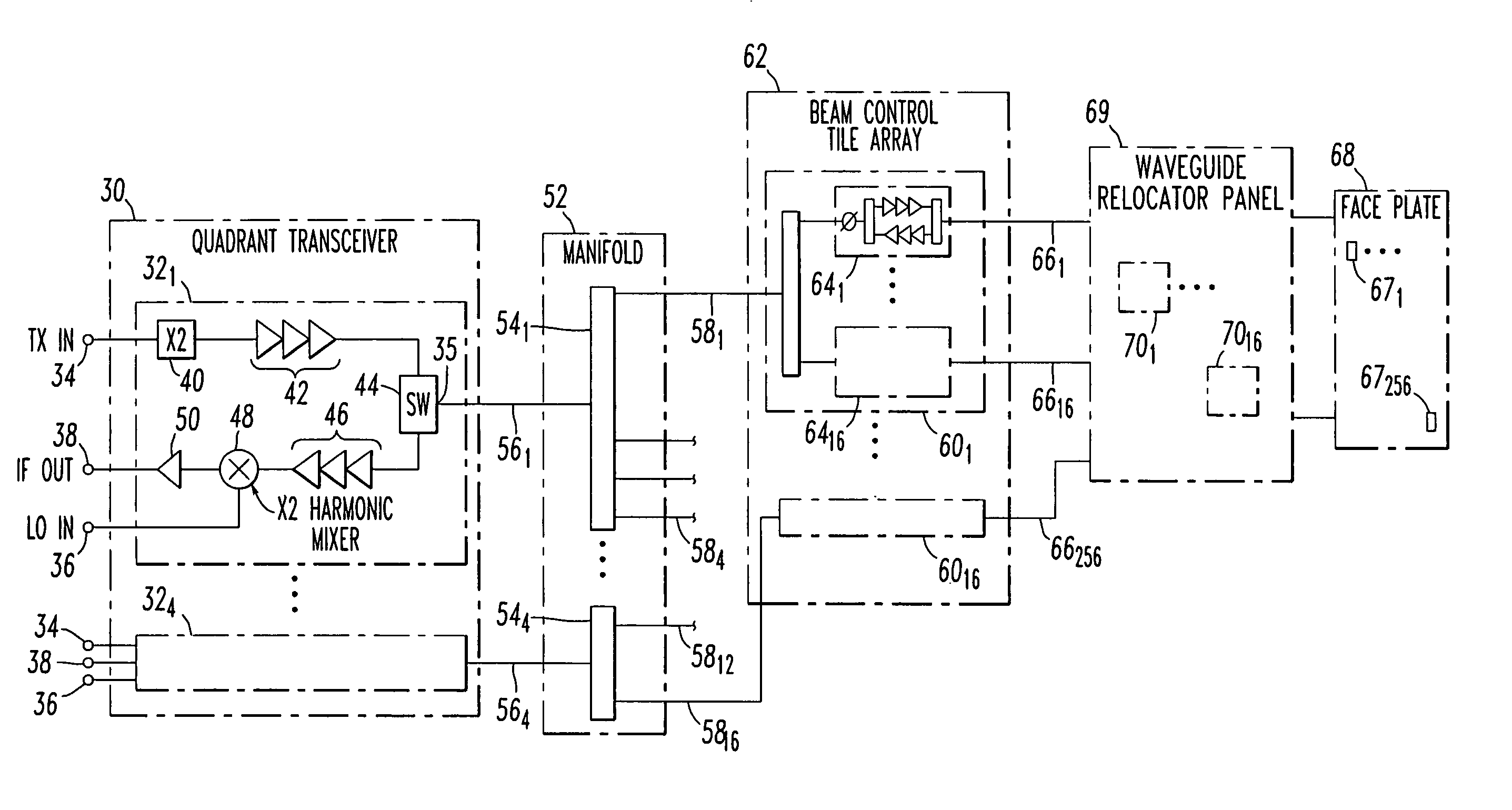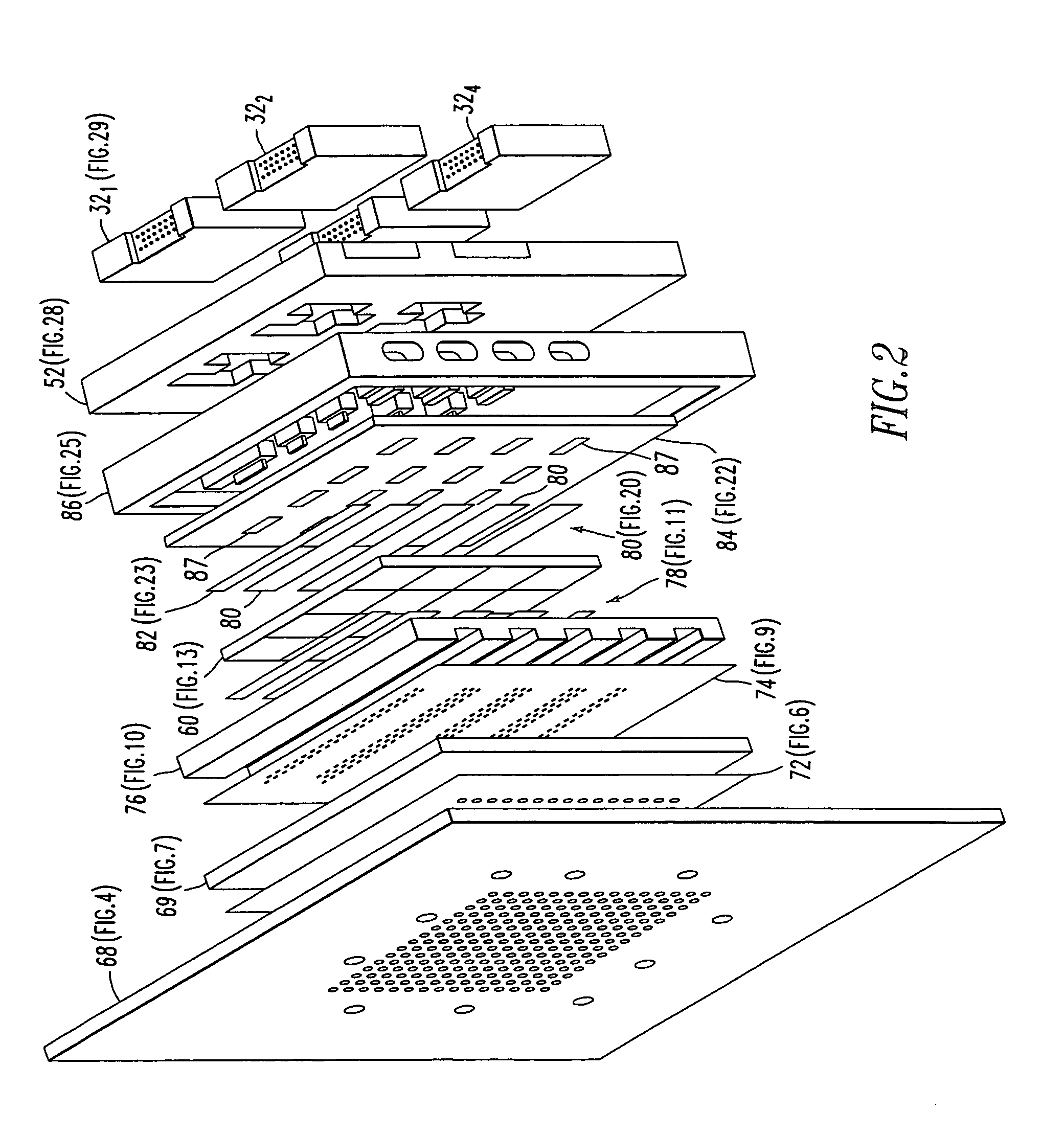Low profile active electronically scanned antenna (AESA) for Ka-band radar systems
a radar system and low-profile technology, applied in the field of radar and communication systems, can solve problems such as insurmountable difficulties, heat extraction from high-power electronic devices, and experience the effect of insurmountable difficulties
- Summary
- Abstract
- Description
- Claims
- Application Information
AI Technical Summary
Benefits of technology
Problems solved by technology
Method used
Image
Examples
Embodiment Construction
[0041]Referring now to the various drawing figures wherein like reference numerals refer to like components throughout, reference is first made to FIG. 1 wherein there is shown an electrical block diagram broadly illustrative of the subject invention and which is directed to a Ka-band multi-function system (KAMS) active bidirectional electronically scanned antenna (AESA) array utilized for both transmitting and receiving RF signals to and from a target.
[0042]In FIG. 1, reference numeral 30 denotes a transceiver module sub-assembly comprised of four transceiver modules 321 . . . 324, each including an input terminal 34 for RF signals to be transmitted, a local oscillator input terminal 36 and a receive IF output terminal 38. Each transceiver module, for example module 321, also includes a frequency doubler 40, transmit RF amplifier circuitry 42, and a transmit / receive (T / R) switch 44. Also included is receive RF amplifier circuitry 46 coupled to the T / R switch 44. The receive amplifi...
PUM
 Login to View More
Login to View More Abstract
Description
Claims
Application Information
 Login to View More
Login to View More - R&D
- Intellectual Property
- Life Sciences
- Materials
- Tech Scout
- Unparalleled Data Quality
- Higher Quality Content
- 60% Fewer Hallucinations
Browse by: Latest US Patents, China's latest patents, Technical Efficacy Thesaurus, Application Domain, Technology Topic, Popular Technical Reports.
© 2025 PatSnap. All rights reserved.Legal|Privacy policy|Modern Slavery Act Transparency Statement|Sitemap|About US| Contact US: help@patsnap.com



